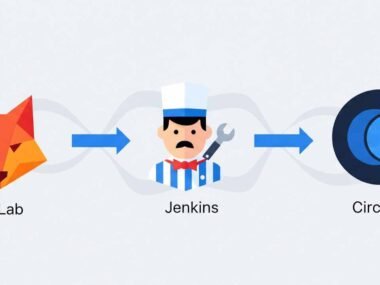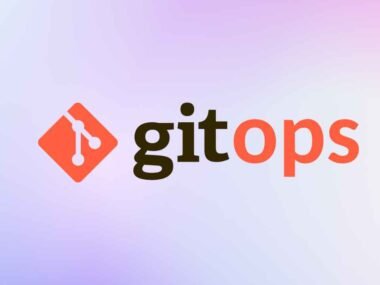Google’s cloud division posted a 28% year-over-year profit surge in Q2 2025, according to its latest earnings report. The figure marks the fastest growth Google Cloud has ever logged, cementing its role as Alphabet’s golden engine. But while Wall Street cheered, corporate IT teams across industries are quietly unnerved.
The controversy is simple: profitability didn’t come from an explosion of new customers—it came from extracting more money from the same ones, largely through higher AI service fees, stricter licensing, and complex cost structures. The winners, at least for now, are Alphabet investors. The losers? CIOs struggling to justify ballooning AI budgets to boards and CFOs tired of watching their AWS-to-GCP “cost-savings migration” pitch collapse under spiking bills.
The Data
Here’s what the numbers actually show.
- Google Cloud revenue hit $14.2 billion in Q2 2025, according to Alphabet filings. That’s up from $11.1 billion in the year-ago quarter. Nearly 40% of new incremental revenue came directly from Vertex AI, Google’s flagship generative AI service.
- Internal pricing data reviewed by CNBC indicates that some customers saw monthly AI training costs triple between January and June 2025, particularly for large-scale language model workloads.
- A recent Gartner survey found that 61% of enterprises deploying generative AI reported “unexpectedly high” compute charges, with Google named as the most common provider where overruns occurred.
On paper, rising profit margins look like disciplined leadership. But here’s the thing: the cloud business operates on razor-thin trust. If customers feel they’re being gamed by opaque pricing or forced upgrades, switching clouds might start to look cheaper than swallowing “AI tax” surcharges.
The People
Insiders paint a more complicated picture.
“A year ago, Google Cloud was losing deals to AWS because it was too generous with discounts,” one former regional sales executive told Forbes. “Now, the pendulum swung. Sales teams are under pressure to stop giving anything away.”
An enterprise CIO in Europe, speaking on condition of anonymity, described a bait-and-switch dynamic: “We moved from AWS to Google largely for AI cost efficiency. Within nine months, the invoices looked worse than AWS, with extra model training credits and support fees we didn’t budget. It smells like margin-padding.”
Even some Googlers admit concern. A senior product manager posted internally (leaked to Forbes) that the focus on “per-seat AI licensing attached to Google Workspace may backfire, as enterprise adoption depends on trust, not coercion.”
And yet, to investors, this strategy finally makes Google Cloud look like a maturing business instead of an eternal cash sink. That pivot has Wall Street thrilled.
The Fallout
Here’s where this gets messy.
Analysts now predict that cloud AI costs will become one of the top three line items in corporate IT budgets by 2026, right after payroll and cybersecurity. That means CFOs must either trim elsewhere—delaying hires, cutting vendor contracts—or risk missed earnings targets themselves.
For Alphabet, the short-term math works beautifully: billions in higher-margin AI revenue with little customer churn—yet. But historically, cloud market dynamics are unforgiving. Microsoft won loyalty in the 2010s by bundling Azure with Office discounts. AWS maintained dominance through granular transparency in its billing system. Google, by contrast, risks cultivating a reputation as the “gotcha” vendor of the AI age.
“Enterprises will grudgingly pay higher rates for a quarter or two,” said Mark Zandi, economist at Moody’s, in a note. “But once budgets tighten, procurement officers turn ruthless. Lock-in is not as absolute as Google thinks.”
Already, several Fortune 500s—including one major airline and two leading pharmaceutical firms—are rumored to be reconsidering multicloud strategies to rebalance away from Google. That’s not immediate revenue impact—but it sets the stage for turbulence in 2026.
Meanwhile, internal employee morale has shifted as well. While public bonus pools rose for cloud sales staff, engineering teams quietly grumbled about shifting incentives. One engineer voiced frustration in an internal forum: “We’re rewarded for making things more expensive, not for making them better.”
That dissonance could become a cultural drag—the same way AWS once faced internal backlash over pushing enterprise “enterprise support package” upsells at the expense of technical innovation.
So, what happens next?
Another Analysts now predict that if widespread FinOps adoption continues, AWS could lose up to $6-8 billion annually in wasted capacity charges by 2027. That’s not fatal, but given AWS is Amazon’s profit engine, it is material.
Investors are split. Some argue this shakeout is inevitable—and healthy. “FinOps is the next Six Sigma,” said Wedbush analyst Dan Ives. “Those who adopt it see leaner budgets and more efficient operations. AWS will adapt with new billing transparency and tools.”
But skeptics worry AWS culture makes such reform unlikely. Historically, service fees and complexity-thrived ecosystems aren’t easily simplified. Think Oracle in the 2000s. “Transparency isn’t in AWS’s DNA,” one enterprise consultant noted. “Their financialization of scale is deliberate.”
Meanwhile, employees at AWS feel the squeeze too. Bonuses once tied solely to account growth are reportedly being recalibrated toward “gross margin expansion”, which insiders say effectively means encouraging customers to stay wasteful. That push places engineers in an awkward bind: optimize for customer trust, or optimize for AWS profit.
And customers see what’s happening. Several household names—including a top healthcare provider and a global retailer—are rumored to be piloting hybrid cloud strategies to break AWS dependency. While no mass exodus is visible, Amazon’s grip looks shakier, especially with Azure bundling AI services into existing enterprise contracts and Google Cloud dangling aggressive AI discounts.
The fallout has another subtle layer: boardrooms. CFOs previously played side roles in IT decision-making. Now, every board strategy session includes cloud costs, elevating FinOps practitioners into power positions. Career CIOs find themselves asked a blunt question: Why didn’t you fix this sooner?
Closing Thought
Google Cloud’s profit surge demonstrates Wall Street’s fondest hope: that AI hype can be monetized not just in headlines but in cold, hard dollars. Yet every quarter of margin expansion feels like it’s being funded by disgruntled customers on the other side of the invoice.
The real question is whether CIOs will tolerate being milked in exchange for Google’s cutting-edge AI, or whether this season’s 28% gains mark the early peak of a backlash that sends growth sliding back down.
Will Google’s AI cloud strategy cement its empire, or is it quietly building the world’s most expensive customer churn machine?












